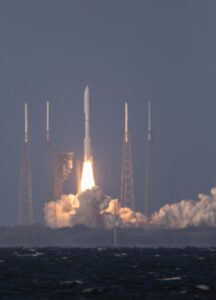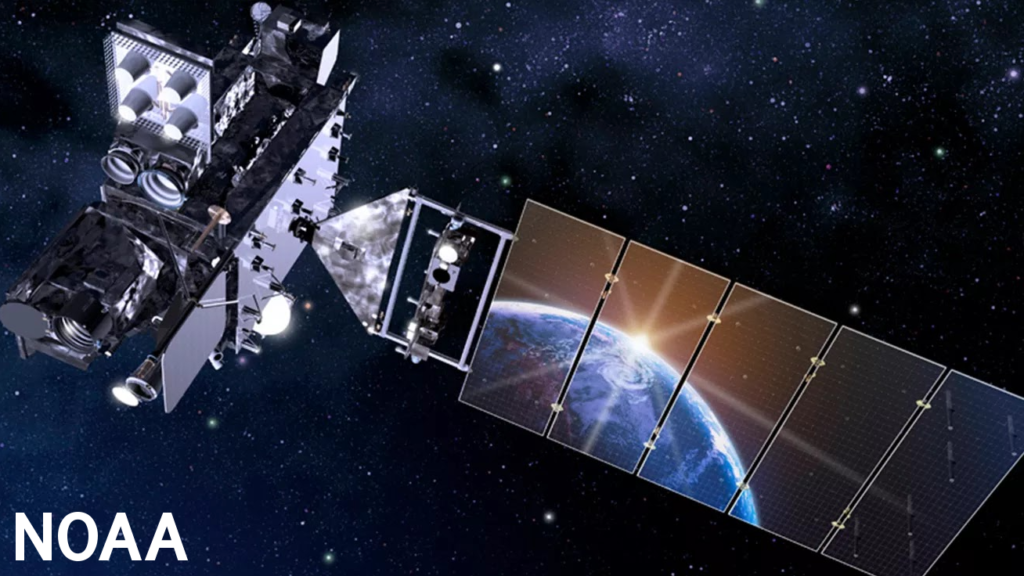US space agency NASA has successfully launched NOAA’s latest next-generation weather satellite GOES-T from Cape Canaveral in Florida.
GOES-T is the third in a series of four advanced Geostationary Operational Environmental Satellites (GOES) to be launched by NASA on behalf of NOAA, and was blasted into orbit aboard a United Launch Alliance (ULA) Atlas V 541 rocket at 4.38pm ET on March 1, 2022.
Mission managers confirmed that the satellite’s solar arrays have deployed and that the satellite is currently operating on its own power. After approximately two weeks, once GOES-T is positioned in a geostationary orbit 22,300 miles above the Earth, it will be renamed GOES-18. After undergoing a full checkout and validating its six high-tech instruments, the new satellite will move to the GOES-West position and replace GOES-17 in early 2023.
GOES-T will track destructive wildfires, lightning, Pacific Ocean-based storms, dense fog and other hazards that threaten the US West Coast, Hawaii and Alaska. It will also monitor solar activity and space weather to provide early warnings of disruptions to power grids, communications and navigation systems.

Rick Spinrad, NOAA Administrator, said, “GOES-T joins the suite of advanced technology providing critical data and imagery to forecasters and researchers tracking hazardous weather and working toward building a climate ready nation.”
Pam Melroy, NASA deputy administrator, said, “We at NASA are proud to support our joint agency partner, NOAA, and their mission to provide critical data and imagery to forecasters and researchers tracking hazardous weather. While the GOES-R series satellites’ main job is to help with weather prediction, these satellites produce observations that also help with NASA science. Our agencies’ collaboration brings great benefits toward understanding our planet.”
Once positioned, GOES-T will constantly provide advanced imagery and atmospheric measurements. Observations from GOES-18 will be fed into NOAA’s National Weather Service’s computer models used by meteorologists to develop forecasts and help predict the formation, growth, intensity and movement of hazardous weather systems.
Additionally, the GOES-18 lightning mapper’s robust and continuous data over the ocean and in mountainous and rural areas not covered by radar will assist in making tropical, aviation and marine forecasts. The lightning data will provide alerts to the potential ignition of a wildfire and its imager will help pinpoint the initial location of a wildfire — crucial for emergency response teams fighting the fires and initiating evacuations. GOES-18 will also help forecasters track and predict the formation and dissipation of fog, which can disrupt airport operations.
GOES-18 will work in tandem with GOES-16, the first satellite in NOAA’s new geostationary series, in the GOES-East position. Together, the satellites will observe more than half the globe — from the west coast of Africa to New Zealand and from Alaska to Antarctica.
NASA’s Goddard Space Flight Center in Greenbelt, Maryland, oversees the acquisition of the GOES-R spacecraft and instruments and built the Magnetometer instrument for GOES-T, as well as for the future GOES-U satellite. NASA’s Launch Services Program, based at the agency’s Kennedy Space Center in Florida, provided launch management for the mission. NOAA oversees the GOES-R Series Program through an integrated NOAA-NASA office, managing the ground system, operating the satellites and distributing their data to users worldwide. Lockheed Martin designs, builds and tests the GOES-R series satellites. L3Harris Technologies provides the main instrument payload, the Advanced Baseline Imager, along with the ground system, which includes the antenna system for data reception.
Looking forward, NOAA is working with NASA on the next-generation geostationary satellite mission called GeoXO, which will bring new capabilities in support of US weather, ocean and climate operations in the 2030s. NASA will manage the development of the GeoXO satellites and launch them for NOAA.
To view the launch video and mission rundown from United Launch Alliance, click here.



